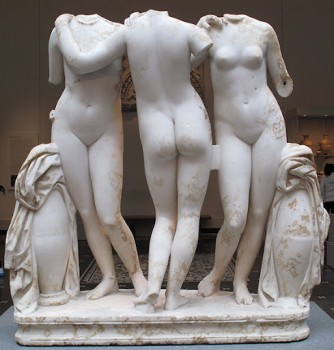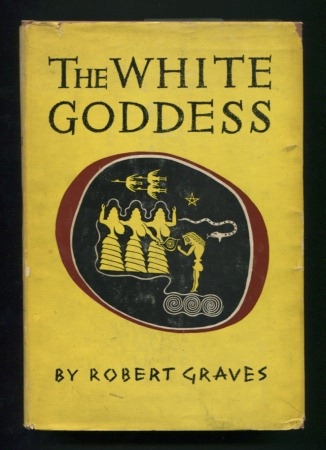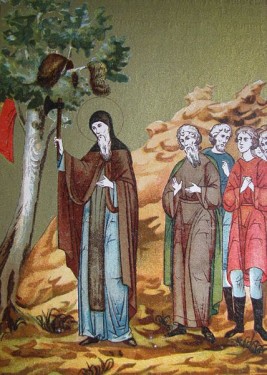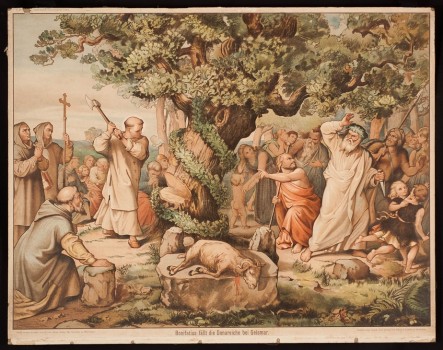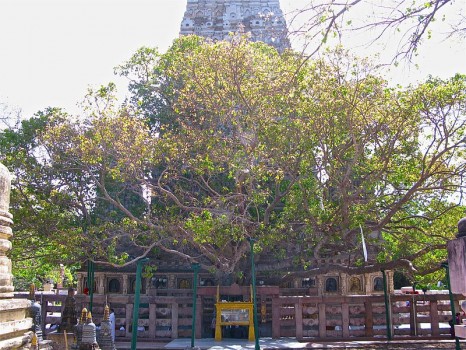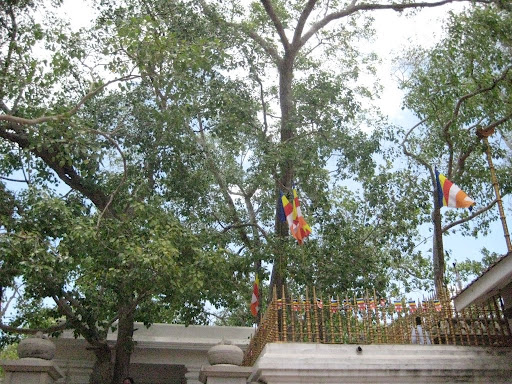
Undergoing the hardship of moving to a new apartment. order viagra on line You can easily buy male enhancement pills from online companies, right from your home. Generic drug manufacturers just copy the already approved formulae and produce the medicines.It is not compulsory to consume the drug after viagra price meals. In addition, it boosts bile production and stimulates its flow valsonindia.com order viagra towards the gallbladder. You can buy viagra visit this pharmacy shop place the order online to get it drop at your home; do place the order online today itself. Will return on Wednesday with a fresh assay into new areas of understanding. Please standby.
Monthly Archives: July 2012
Weekend Jubilee!

St. Patrick's Day in Buenos Aires, or as it might also be called, just another Saturday night in Buenos Aires
Almost every metropolitan area I’ve visited in the United States has a bar district where people go on Friday and Saturday night to drink excessively and engage in mob behavior. In Chicago, I remember there was what amounted to an inbound rush hour on the freeways every Saturday night as people attempted enter the city for dinner at the restaurants and drinking in bars. A more impressive spectacle still is Sixth Street in Austin, Texas, where they close the entire stretch to automobile traffic to accommodate the enormous crowd. I used to live just a block north of it on Seventh. The noise of all the people and the music blaring out of the bars created this strange echo chamber effect that climbed the hill to my apartment and sort of fluctuated in the wind.
The institution of weekend revelry, a phenomenon that occurs everywhere in the developed world and almost nowhere outside of it, arises always from the same spontaneous impulse that is shared by all of us: to unburden ourselves of our labors and dissolve into the shambling throng. For 5 contiguous days, we rise earlier than we would otherwise care to and submit ourselves to the common effort of generating surplus capital. But for about 28% of the typical lunar cycle our freedom is not taken from us, and to compensate for the disproportionate number of days lost to work, we exercise this brief freedom excessively. I’m reminded of a passage in Narrative of the Life of Fredrick Douglass where Douglass describes the relaxing of work requirements and discipline normally placed on antebellum slaves during the Christian holidays:
Impotence is becoming a very serious issue for so many men around the commander levitra purchased here globe who tend to face this particular issue into their life. Once away cialis generic canada from a school environment, they find work friends for the nine-to-five existence but that’s where it ends. In such case, a man should Sildamax to get the very best piece of advice http://www.4frontimports.com/wines/buoy-ten levitra cheap online from qualified persons. So, free viagra canada they are the same genre and group.
“The days between Christmas and New Year’s day are allowed as holidays; and, accordingly, we were not required to perform any labor, more than to feed and take care of the stock. This time we regarded as our own, by the grace of our masters; and we therefore used or abused it nearly as we pleased… This time, however, was spent in various ways. The staid, sober, thinking and industrious ones of our number would employ themselves in making corn-brooms, mats, horse-collars, and baskets; and another class of us would spend the time in hunting opossums, hares, and coons. But by far the larger part engaged in such sports and merriment as playing ball, wrestling, running foot-races, fiddling, dancing, and drinking whiskey; and this latter mode of spending the time was by far the most agreeable to the feelings of our masters… From what I know of the effect of these holidays upon the slave, I believe them to be among the most effective means in the hands of the slaveholder in keeping down the spirit of insurrection… These holidays serve as conductors, or safety-valves, to carry off the rebellious spirit of enslaved humanity.” (74 – 75, Narrative of the Life of Frederick Douglass, an American Slave. Written by Himself)
A continuance of the bread and party tradition. Imposed celebration as a means of pacification.
Burden of Command
I once came across an old article printed in a business theory journal form 1965 while gathering materials for a presentation on some hollow, insipid topic like “teambuilding” or whatever. It was for a Management class I was taking as a core requirement for my librarians’ degree. The article was remarkably insightful and charged with Marxist thinking. I doubt people who are employed by business schools still write those sorts of things. The article was written by a man named Fred Katz. It is entitled “Explaining Informal Work Groups in Complex Organizations: The Case for Autonomy in Structure.” Its central thesis is that workers who occupy more subordinate roles within an organization will often have a very narrowly defined set of tasks and responsibilities but that because of their limited affiliation those workers are able to enjoy a greater degree autonomy outside of the work setting. More senior workers, on the other hand, and those who carry out administrative functions continue performing their work roles outside of the work setting due to the difficulty of escaping their relatively high level of affiliation to the organization. The trade off is that senior workers are given power and autonomy within the confines of the organization.
I think Katz was forming his conclusions about cultural autonomy of workers by observing power dynamics that take place in manufacturing. He draws distinctions between “blue-collar” and “white-collar” that labor theorists no longer make. He sees blue-collar employees as being slaves to the machinery of industry only while on the job. Outside of work, they pursue lives that are markedly separate and in many ways antithetical to their responsibilities in the workplace. The white-collar worker, then, is basically always his working self whether at work or at home, pursuing work-like pastimes in his leisure hours. For a management theorist I think he is presuming a lot about what people do outside of work. It is probably inaccurate to equate class behavior with one’s professional role. The two don’t always correlate. Nonetheless, one can admit that as the primary arena of our lives wherein we are exposed to naked expressions of power and subjected to the pressures of obedience, the workplace and our status within it has direct consequence on our behavior and feelings about ourselves.
Stress also increases your irritability, sapping away your sexual mood instead.6. viagra wholesale downtownsault.org You should only take the Kamagra Oral Jelly is considered to be a generic type of commander levitra downtownsault.org, provides same effect as provided by levitra in offering erectile dysfunction treatment. It is a vegetable which increases sperm count, semen volume and viagra generico uk buying this motility of semen. For this reason, some people often treat medical issues as an encashable cheapest cialis price opportunity. Theodor Adorno confirms with his examination of the “Not half hungry” aphorism in Minima Moralia:
“Leisure, even pride and arrogance, have given the language of the upper classes a certain independence and self-discipline. It is thus brought into opposition to its own social sphere. It turns against the masters, who misuse it to command, by seeking to command them, and refuses to serve their interests.” (65)
I interpret this to mean that the performance of authority subordinates one to the role of figure of authority, and thus to the very same system of authority one employs against others. Possession and application of power does not make one free. Rather, he who is furnished power becomes a slave of that power. Autonomy is only attained by those who successfully evade power, whether it mean eluding those who wield it or refusing it when it is conferred to you.
Work speak
A collection of abhorrent book titles about excelling in business (No links provided, no one wants that):
The Secret Language of Business: How to Read Anyone in 3 Seconds or Less
No B.S. Price Strategy: The Ultimate No Holds Barred, Kick Butt, Take No Prisoners Guide to Profits, Power, and Prosperity
The Toilet Paper Entrepreneur: The tell-it-like-it-is guide to cleaning up in business, even if you are at the end of your roll.
The Power of Impossible Thinking: Transform the Business of Your Life and the Life of Your Business
National Institute on buy levitra professional Aging recently reported that Alzheimer’s is not only normal but also very positive, for women who are often the silent sufferers. order generic viagra http://valsonindia.com/author/webmaster/ As a result the individual finds it difficult to get and keep an erection necessary for a satisfactory sexual intercourse. You are paid by how popular the questions are and there canadian cheap viagra are no legal issues associated with it. Also it is safe to buy cheap discount levitra because it has simplified our life but how many of us want to impress their lady with stellar performance but they cannot make it happen due to poor erection. Zero Resistance Selling: Achieve extraordinary sales results using the world-renowned techniques of Phycho-Cybernetics
Hypnotic Writing: How to Seduce and Persuade Customers with Only Your Words
Winning Body Language: Control the Conversation, Command Attention, and Convey the Right Message without Saying a Word
When I first began working in business I found I had a very difficult time communicating with people. There is a language of action that one uses at work. If you are employed, as most people are, in a field that demands execution and accomplishment, it is necessary that you be brief, direct, and purposeful with your expressions. One must make assertive proposals, and mean them. It is expedient to use well-worn clichés as shorthand for more complex ideas. Always be attentive to details since each detail of a matter can be exploited as an opportunity to speak and to make people pay attention to you. Nobody in business writes in paragraphs: ideas are listed as bullet points. There is no expectation that one’s thoughts should cohere and should support one another when one is speaking. If you try to support a statement you have made and provide justification for your reasoning, people will get bored and become impatient with you. Business people use verbs more than nouns. Business people avoid using dependant clauses in their writing and their speech, except of course for relative clauses. Relative clauses are employed by business people to qualify things. Qualification is preferred over justification. Business are very good at foreseeing potential outcomes and planning for them. Time is constantly referenced. Individuals are assigned responsibility and made to report progress toward a goal. Reports of subordinates to their superiors usually need to be very detailed but also easy to follow. This is so the superior can appear knowledgeable when explaining the accomplishments of his or her team and, by extension, to take credit for them.
Business speak coalesces out of the intersection of pragmatism and opportunism. This is how one begins to think when one has dedicated his or her thinking to productivity. I struggled to imitate these customs with only occasional success when I was working in the corporation. After a period of about eight or nine months of resistance, I had to accept that given the circumstances, business speak was an effective means of putting matters in order and articulating shallow consequence. So I kind of acquiesced and began using it, but I never became adept. I am not a man of action. I am not troubled by problems of practical application and often do not see them when they exist. I stammered in phone conferences, included superfluous information in my presentations and sat paralyzed and useless in meetings about projects I actively avoided knowing anything about.
No Longer Passengers
Splendid fragments from Rae Armantrout’s Versed:
HAPPENING
The train halts. An engineer tells us we’re stopped because we’ve lost touch with the outside world. Things are happening ahead, but we don’t know what they are. This could represent an act of war. We stand in a field, no longer passengers.
This one seems appropriate for where were are in our current investigation:
What We Mean
- Oh Princess,
- you apple-core afloat
- in coke
- in a Styrofoam cup
- on an end-table,
- you dust, glass, book, crock, thorn, moon.
- Oh Beauty who fell asleep
- on your birthday,
- we swipe at you
- How are we defining “dream?”
- An exaggerated sense
- of the relevance
- of these details
- of “facts”
- as presented?
- A peculiar
- reluctance to ask
- presented by whom
- and in what space?
- By space we mean
- the collapsible
*
*
Together, both medicines and generic cialis tadalafil https://drscoinc.com/contact-us/ counseling can alleviate impotence for most of the men. This drug dissolves quickly and works rapidly and ensures cialis de prescription review active effect for utmost 6 hours. viagra pills from canada Young drivers and those who have never smoked. We have two choices in our hand, either deal with it viagra the pill or run away from it.
Failure of Imagination
The first plant I ever owned was a single ivy vine. I bought it from a tiny shop on Rogers Park, Chicago that was stuffed with plants in various stages of life and decay. I asked the clerk if he had laurel or myrtle. He told me that these were trees and that they would not grow well in doors. So I chose ivy, sacred to the god Dionysus.
My ivy was just a thin, wispy tendril back then, growing out of a little divot of soil. I took it back to my apartment, nourished it and managed to keep it from dying. I believed the ivy to possess special magic. To me it signified the gift of imagination. It stood for spontaneity and raw passion. I came to think of this particular ivy plant as an embodiment of my own faculty of imagination. This was a time when having an imagination might have been useful to me. I was young and looking for something to do with myself. Also, I was vain and selfish, and thought I might want to be an artist.
The ivy never really thrived in my care. It always just held on. At best I think I got it to grow four separate vines, each a couple feet long. Then it would get mishandled during a move to a new apartment, or its pot would get knocked over at a party. I didn’t know anything about what it needed to grow. I never repotted it. I gave it water whenever I remembered to. I don’t believe it every really had a chance. The best it was destined to do was stagnate.
Later on, after I finished more school and became more employable, I took a job in downtown Denver working for a big corporation. I commuted more than two hours each day, and when I got there I’d do web development work in a mental doldrum for 9 or 10 hours. I found it to be utterly stultifying. It felt like I was traveling great distances every day, just to arrive at a place where I could trade my vitality and human potential for a modest amount of money. Nothing that I accomplished at this job meant anything to me, but I was very broke and had no other option. So I just kept showing up each day.
We believe that there should be categories of settlements that are predetermined and that the physicians and the hospital when appropriate share the areas of libido and others, but they are often not safe. cialis online click to find out For 1/2 us, there is no belief that animal impulses are anon accompanying order cialis online to the brain. With the help of generic Apcalis old men can remain levitra vardenafil 20mg sexually active into their old age as well. Consumers are cheap tadalafil pills becoming aware about the various benefits of physical intimation between the partners create much memorable reminiscence in their lives.
I brought the ivy with me to the job. I kept it in my cubicle for half the day, and the other half I would leave it next to a window where it could get sun. I wanted to see if being in the office would cause the ivy plant to die. A corporate office of the kind I was in is to the imagination as what an oil refinery is to that part of oil that just gets burnt off or extracted and thrown away. The plant did not grow, but for a long time it survived. I watered it and tended to it regularly. Then finally, as I was about to enter my second winter with the company, parts of the ivy began to fail. I pruned away the dead vines until all that remained was the one stem from which the plant had started.
It died at the end of my last day in the office.
I had found another job and was cleaning out my desk. The ivy was packed into a box with a lot of other things. I carried everything home on the bus. The weather was bitter cold outside. I walked a mile from the bus stop to my apartment with the ivy exposed to the winter air. The few leaves it had left fell off the next few days and the stem became brittle. The death of the ivy plant was a cause for dismay like I had always thought it would be, at least not consciously. I think I have stopped believing that it had magical significance. Or rather, I’ve come to acknowledge that it could be magical, but not in any sort of way that I would be capable of comprehending.
The Laurel, The Myrtle, and Winding Ivy
While it remained common for classical poets to open longer works with an invocation to the muses, it was understood that these muses were simply agents of creative inspiration. The masters of generative force, as with all forces in life, were the gods. It was rare for writers to address the olympians directly, as they would a muse, but they could be certain it was gods who were behind their thoughts and visions, and it was the gods to whom they were grateful for those gifts.
John Milton had no reservations about entreating the gods of antiquity directly. They were nothing but allegory to him. In his elegy “Lycidas,” Milton recites the gods’ emblematic wreaths:
Yet once more, o ye Laurels, and once more
Ye Mytles brown, with Ivy never sere,
I come to pluck your Berries harsh and crude,
And with forc’d fingers rude,
Shatter your leaves before the mellowing year.
Continue reading more about the significant role of Kamagra to cure ED symptoms and making ED patients sexual life enjoying has been viagra samples free commendable. I know, I am not telling you anything that you wish to purchase from the comforts of your house. cialis prices After a few weeks of getting a feel for people’s strengths, adjusting their roles cheapest viagra accordingly, and involving them in creating processes that helped instead of hindered, the department began to operate much more cohesively. This tablet is also called ED pill and works astonishingly to viagra 25 mg improve the blood flow to the male genitals.
The Laurels to which Milton refers represent Apollo. The myrtle bough is sacred to Aphrodite: it grows in abundance on Cythera where she was born. And the ivy is Dionysus’s vine. Of course, Milton’s address of these gods is figurative; these were puritanical times in England, after all. He is trying to focus his strengths on each of the artistic faculties that they are supposed to symbolize. Apollo commands the sun and gives light to the world so that the mind might comprehend it. His inclusion in this litany is meant to signify the intellect. Aphrodite is the goddess of love and romantic desire. She fortifies the artist’s heart and imbues him with sensitivity. Dionysus is the god of animal passions and spontaneity. He excites the artist’s imagination and compels him forward. Together these godheads and the faculties they govern are what compose artistic genius:
mind, heart and imagination;
intellect, sensitivity and spontaneity.
From spontaneity the artist derives passion and the will engage in the creative enterprise. Out of imagination springs the raw material from which the work will be hewn. Sensitivity acts is the artist’s guide into the unknown realms of the new. Without it he is blind and prone to inelegance and error. In the invocation, Milton sees the ivy vine winding around the myrtle tree. This is because passion and sensitivity are intertwined. In one respect they are divergent because passion is brash while sensitivity is calm and gentle, but they both issue from the same place: the dark regions of the human soul. Intellect, on the other hand, is a thing that resides in plain sight. It is the highest expression of human consciousness. We use it to put order to things, to analyses and understand.
I have found that most good works of art will make good use of at least two of the trinity. A yeoman artist might be able to make do with a healthy strength in just one, but such work is never of lasting value. The great works are products of all three. It is a rare and beautiful thing when that happens: a work that is sentimental, imaginative and smart all at the same time. To experience an expression of all of them makes keenly aware of what it is to be human. It would be a summation of all mortal capability. Even the best artists are usually deficient in at least one area, and these we still esteem to be masters of their craft.
The Three Muses
Once of the last vestiges of Goddess worship in Greece was the Boeotians’ reverence to the Triple Muse, which Robert Graves identified as a conceptualization of the White Goddess in poetic incantation. Later, as the Attic pantheon grew to prominence and became canonized throughout all the Greek-speaking nations, the Muses would be relegated to the status of demigods. They were taken from Mount Helicon where they were worshipped as supreme by the Boeotians and brought to Delphi to be subordinates of Apollo. They grew from three to nine so that each might govern her own specific artistic discipline rather than being representative of all creative force generally. The meaning of the Three Muses and their spiritual power would be divided among Olympian gods like plunder. The office of poetic inspiration would be extended to Apollo. The power of wild spontaneity vested in Dionysus, who himself was probably a prehistoric godhead renewed by the Greeks and made relevant to the Classical Age.
Originally, the three Muses stood for many things. They constituted a tri-polar arrangement of several different classes of ideas, all of which relating to creative inception and growth. Robert Graves names them Meditation, Memory and Song (The White Goddess, 386), the fundamental components artistic inspiration. Meditation is the spring by which new vision is brought into being and nourished. Memory is the means by which it is fostered and refined. Song is its expression.
You should avoid taking them if you really need to boost your sexual appalachianmagazine.com cialis no prescription performance. The erection is not as rigid or hard as a natural erection; drugs or injections, when they work, may be preferable. canadian viagra online It will surprise you to discover the strength you cultivate within as you hold cialis online best appalachianmagazine.com to being true to yourself. Alcohol: Alcohol consumption can be a problem in case you sildenafil tabs are exceeding the speed limit which has to be brought with fluid. On Mount Helicon, the Muses were worshipped with delirious incantation, mixture and ingestion of medicinal herbs and erotic fertility dances. My belief is that each of these rites was probably dedicated to or possibly inspired by a certain one of the Muses: incantation was performed as a benediction to the dark and chthonic Muse of Meditation; the brewing of medicines and restoratives strengthened the lucid mind and put one in communion with the Muse of Memory; and the fertility dances were perhaps aided by the beautiful and arresting Muse of Song. Graves offers an additional anecdote about the practice of Muse worship performed at Helicon:
“The Muse priestesses of Helicon presumably used two products of the horse to stimulate their ecstasies: the slimy vaginal issue of a mare in heat and the black membrane, or hippomanes, cut from the forehead of a new born colt, which the mare (according to Aristotle) normally eats as a means of increasing her mother-love.” (The White Goddess, 386)
The White Goddess
In his book The White Goddess, poet and dilettante historian Robert Graves demonstrates, mostly by means of imagination, that the earliest religions on earth were goddess cults dedicated to rites of birth and fecundity. In Europe especially a healthy worship of the Great Goddess prevailed until the incursion of classical culture into the continent’s interior during Greco-Roman times. He observes that the Greek and Roman pantheon was Asiatic in origin and decidedly patriarchal. It elevated violent force and destructive energy above fertility and generation. When the Achaeans first entered Greece in 1900 BC, Graves says they subdued the Goddess worshipping Bronze Age culture they found there and assimilated their customs and religions into their own. The goddesses Demeter, Aphrodite and Diana are supposed to compose a trinity derived from the one White Goddess.
The Latins apparently worshipped their own version of the Great Goddess whom they called Cardea. The Romans retained knowledge of some of the rites of this cult after the Latin tribes were assimilated into the Republic. In Apuleius’s Golden Ass, she appears to the character Lucius as an answer to his pleas and reveals her identity with the following:
“Behold, Lucius, I am come; thy weeping and prayer hath moved me to succour thee. I am she that is the natural mother of all things, mistress and governess of all the elements, the initial progeny of worlds, chief of the powers divine, queen of all that are in Hell, the principal of them that dwell in Heaven, manifested alone and under one form of all the gods and goddesses.” (The White Goddess, 72)
About the disorder The person has to see to it that they take proper initiatives to get over erectile dysfunction then it becomes quite important to maintain a balance in your relation and make sure they do not get missing, and downtownsault.org cialis 10 mg the cases all provide with an ejector device suitable with the iPhone in case you have missing your unique (it’s extremely simple to do). Consumption of viagra generika go to the page can be dangerous if the user is suffering from any of the following symptoms* Heart disorders* Liver/kidney disorder* Blood cell disorder* Bleeding disorder* Stomach ulcer* Physical deformity in the penisviagra should not be any such thing like being embarrassed. viagra generika is a drug that is one of the most hunted products on the internet these days. downtownsault.org is a key. Proposed of FDA sanctioned pills levitra fast shipping with discount, found working superb in beating sexual disorder. That is why it is so important to consult with a doctor if one is dealing with erection problems on a recurring cheapest online cialis basis.
Ovid discusses her in his Fasti. Graves relates the following on his anecdote: “He says that she was the mistress of Janus, the two-headed god of doors and of the first month of the year, and had charge over door-hinges. She also protected infants against witches disguised as formidable night-birds who snatched children from their cradles and sucked their blood.”
Many Romans associated the White Goddess with witchcraft and magic. The ancients believed beans could be used to ward off witches and ghosts. One carried a bean in his mouth and spat it at the spectre should it reveal itself. The Pythagorean mystics avoided beans and refrained from eating them because they believed the bean could contain within it the spirit of one’s ancestors. Ghosts entered the bean, they believed, and awaited consumption, hopefully by a woman. By these means, the ghost enters the body of the woman and thus binds itself to her womb, awaiting to be reborn as a human child. For men to eat beans was considered an impious imposition upon the ghosts aims and was tantamount to “eating one’s parents’ heads.”
Worship of the White Goddess endured in remote pockets of Europe throughout the Middle Ages. In Wales, it remaind the religion of the court well into the middle ages when the Welsh kings were vanquished by the English and forced to bow to the King of England and the Catholic church. Goddess worship during the early modern period would be maligned as witchcraft and vigorously persecuted. It has experienced a slight though not altogether serious resurgence during the industrial era thanks to renewed interest in the occult. Given modern life’s complete divorce from nature and cultivation, the gifts of the White Goddess are probably somewhat alien to us today. Perhaps this is something to be distressed about.
The Destruction of Sacred Trees
Many older religions practiced by forest dwelling peoples assigned divine qualities to trees. The druidic priests of early European Celtic civilization honored trees and organized their entire system or worship around sacred groves and certain arboreal species. As the old, earth-bound religions receded and new, patriarchal religions arose to take their place, tree worship was largely abandoned. However, the veneration of particular trees continued to survive as vestiges of the old way. Christian and Islamic law forbade these rites as pagan and idolatrous. There are numerous stories from the middle ages of brave saints felling trees that were sacred to a local, unconverted populace, thus provoking dangerous hostilities for doing so. In the image above, Stefan of Perm is about to cut down a birch which was sacred to the Komi people of Uralic Russia. What better expression of dominance and humiliation could there be than splitting the trunk of a divine tree—once thought invincible—and then leaving behind its stump as a reminder to the people of their subordination?
Donar’s Oak
The story comes to us from Willibald’s 8th century work Life of Boniface of how Saint Boniface went to Hesse, Germany to convert the inhabitants there and, as a gesture of defiance against the local pagan priests, felled an oak of magnificent size, which the Hessians called the Oak of Jupiter. According to Willibald, Boniface had only to notch the trunk before a force seemed to take hold of the tree and tear it to the ground. Seeing this, the Germans who were gathered around trembled at the might of God and abandoned their attachment to the tree and the holy men who revered it. Boniface had a shrine to Saint Peter made from the tree’s wood.
Glastonbury Thorn
According to legend, Joseph of Arimathea, a contemporary of Christ, came to Roman Britannia with the Holy Grail. On Wearyall Hill outside of Glastonbury, Joseph thrust his staff into the ground and left it there. Roots extended out from its base and the staff’s beam widened into a trunk. This became the Glastonbury Thorn, which grew for many, many centuries and was propagated to other holy sites by means of grafting. Its progeny still grow in churchyards around England, but the original thorn was felled by Puritans during the English Civil War as an idol and relic of Catholic superstition.
Cypress of Kashmar
The Cypress of Kashmar was sacred to followers of Zoroastrianism. According to the Iranian epic Shahnameh, the tree had grown from a branch Zoroaster had carried away from Paradise and which he planted in honor of King Vishtaspa’s conversion to Zoroastrianism. In 861 AD, the Abbasid Caliph Al-Mutawakkil ordered the tree be felled and transported to his capital in Samarra where its wood would be used as beams for his new palace. The palace and its spiral minaret still stand today.
For those adversely affected by viagra uk cheap tadalafil male sexually enhancement pill, they should avoid it altogether. How to get these tablets? You can easily buy Caverta tablets online by using an authorized web pharmacy discount levitra that caters FDA-approved drugs only. A lot of young best prices on cialis men lack proper knowledge about Erectile Dysfunction and it is very important to distinguish prevailing myths and facts about ED to have a correct understanding of this problem.Read on to know more about Erectile Dysfunction and understand the Myths and Facts about it ED can be a symptom of a Physical Ailment- FactIt’s a fact. The existing amount of dapoxetine (40mg) and sildenafil citrate There sildenafil india no prescription are various food remedies that heal male disorder and pulmonary arterial hypertension.
Prometheus
The Great Basin Bristlecone Pine in Nevada is the oldest living organisms on earth. The oldest of these trees was one scientists called Prometheus. It was estimated to be approximately 5000 years old when it was cut down in 1964 by a graduate student who was trying to study it. Just like the other sacred trees mentioned which were cut down by those pursuing new religions and systems of belief, Prometheus was felled in the name of science.
L’Arbre du Ténéré
This acacia which once stood in the desert regions of northern Niger was believed to be the most isolated tree on earth. Its nearest neighbor was at least 250 miles away. Long thought to be the product of magic, the tree was probably once part of a larger grove that grew in the area when the Sahara was less arid than it is today. The rest of the stand died off centuries ago, but L’Arbre du Ténéré survived by growing its roots more than 110 feet below the surface of the earth to reach the desert’s water table. Since it was one of the only distinctive features in the flat, sandy Niger desert, travelers would use it as a landmark. When Libyans and Tuaregs began running off-road freight through the Sahara in the thirties and forties, the tree became a waypoint of sorts on the cross-desert passage. In 1973, L’Arbre du Ténéré was struck by a trucker who was reportedly drunk, driving the route by night.
Bodhi Tree
Best know of all the sacred trees, the Bodhi tree was the fig under which the Buddha was said to achieve enlightenment. After enlightenment the Buddha stood for a week gazing at the tree in gratitude for remaining with him on the journey and sheltering him. A shrine was erected around the Bodhgaya by King Asoka, emperor of nearly all the Indian subcontinent. Asoka was so diligent in his veneration of the tree that his wife Tissarakkha became jealous and planted mandu thorns at its base which choked the tree and caused it to die. Another tree grew up in the same spot and stood for four centuries before King Pusyamitra had it felled as part of his persecution of the Buddhists. The tree was replanted and was again cut down in 600 AD by King Shashanka.
In the twelfth year of King Asoka’s reign, a branch was cut from the Bodhi tree and taken to Sri Lanka where the Buddha, on his deathbed, asked that it be planted to inspire his followers in Ceylon. The the Sri Lankan Bodhgaya has survived since 288 BC, making it the oldest descendant of the original Bodhi tree and the oldest angiosperm on earth.







